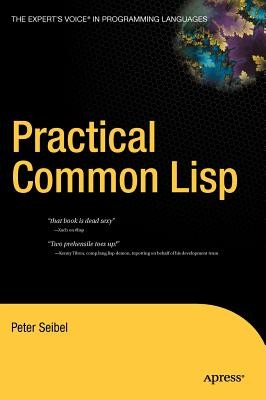
- We will send in 10–14 business days.
- Author: Peter Seibel
- Publisher: Apress
- ISBN-10: 1590592395
- ISBN-13: 9781590592397
- Format: 18.3 x 26.4 x 3.7 cm, kieti viršeliai
- Language: English
- SAVE -10% with code: EXTRA
Reviews
Description
Lisp is thought of an academic language but it need not be. This is the first book that introduces Lisp as a language for the real world.
Part I is the introduction to the Lisp language. The goal in Part I is to give the reader an overall understanding of the features of the language and a sufficiently robust understanding of how they work in order to prepare the reader for the practical code examples in Part II. Part I includes the case studies of the Franz Store, Viaweb, Pandorabots, and ASCENT.
Part II shows larger-scale examples of practical Lisp programming. The practical examples in this section are all centered around building a streaming mp3 server. By the end of the book, the reader will have code for a Lisp mp3 server that serves streaming mp3s via the Shoutcast protocol to any standard mp3 client software (e.g. iTunes, XMMS, or WinAmp). Siebel will show how to store metadata in both a simple home-brew sexp database as well as a relational database (MySQL). He will demonstrate how to use threads to support multiple simultaneous client connections. The server will advertise a Web Service (WSDL) interface and a Web Services programmer (i.e. anyone with Visual Studio .NET) can write an app to replace the browser-based interface.
EXTRA 10 % discount with code: EXTRA
The promotion ends in 23d.20:57:23
The discount code is valid when purchasing from 10 €. Discounts do not stack.
- Author: Peter Seibel
- Publisher: Apress
- ISBN-10: 1590592395
- ISBN-13: 9781590592397
- Format: 18.3 x 26.4 x 3.7 cm, kieti viršeliai
- Language: English English
Lisp is thought of an academic language but it need not be. This is the first book that introduces Lisp as a language for the real world.
Part I is the introduction to the Lisp language. The goal in Part I is to give the reader an overall understanding of the features of the language and a sufficiently robust understanding of how they work in order to prepare the reader for the practical code examples in Part II. Part I includes the case studies of the Franz Store, Viaweb, Pandorabots, and ASCENT.
Part II shows larger-scale examples of practical Lisp programming. The practical examples in this section are all centered around building a streaming mp3 server. By the end of the book, the reader will have code for a Lisp mp3 server that serves streaming mp3s via the Shoutcast protocol to any standard mp3 client software (e.g. iTunes, XMMS, or WinAmp). Siebel will show how to store metadata in both a simple home-brew sexp database as well as a relational database (MySQL). He will demonstrate how to use threads to support multiple simultaneous client connections. The server will advertise a Web Service (WSDL) interface and a Web Services programmer (i.e. anyone with Visual Studio .NET) can write an app to replace the browser-based interface.


Reviews